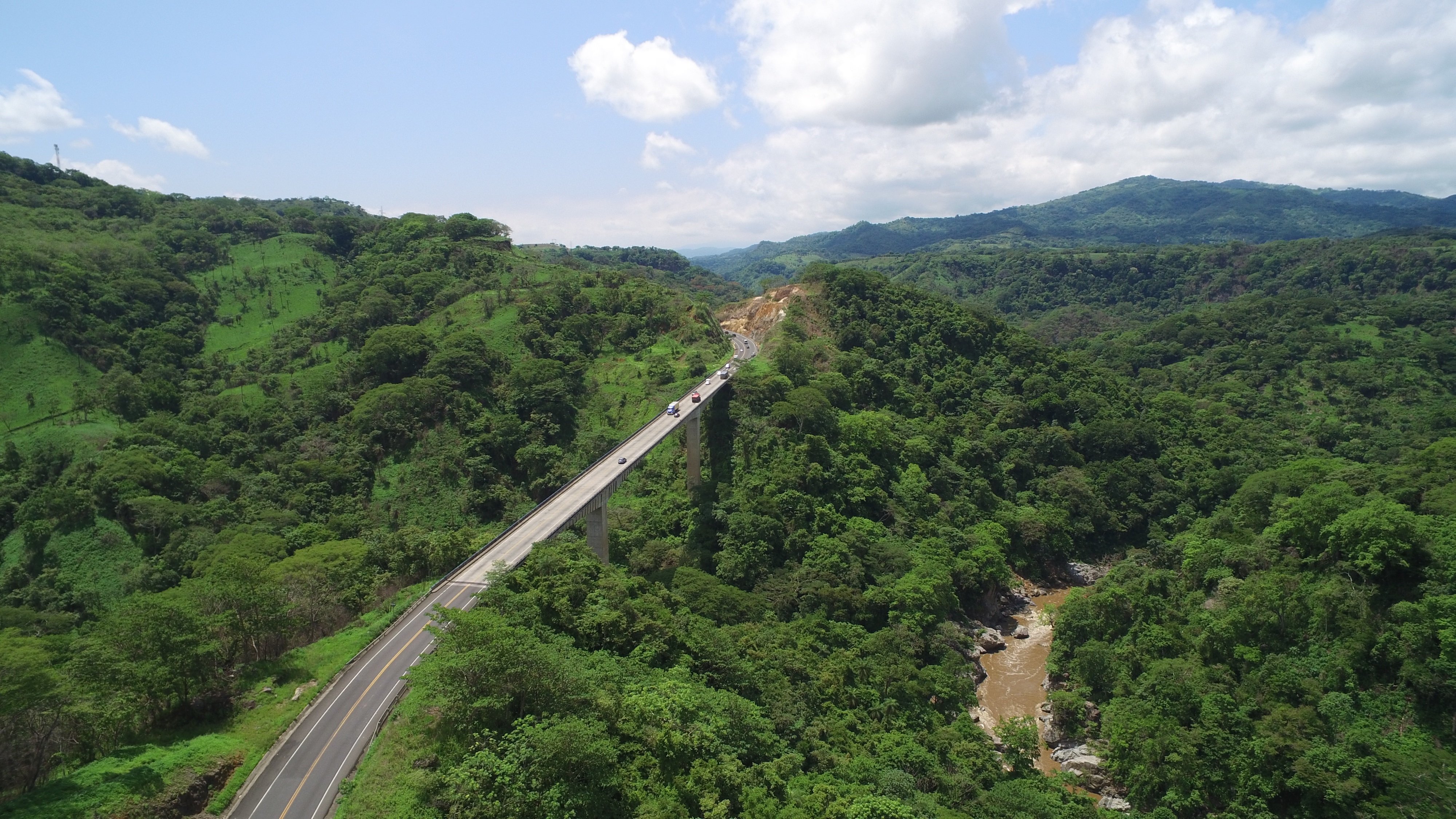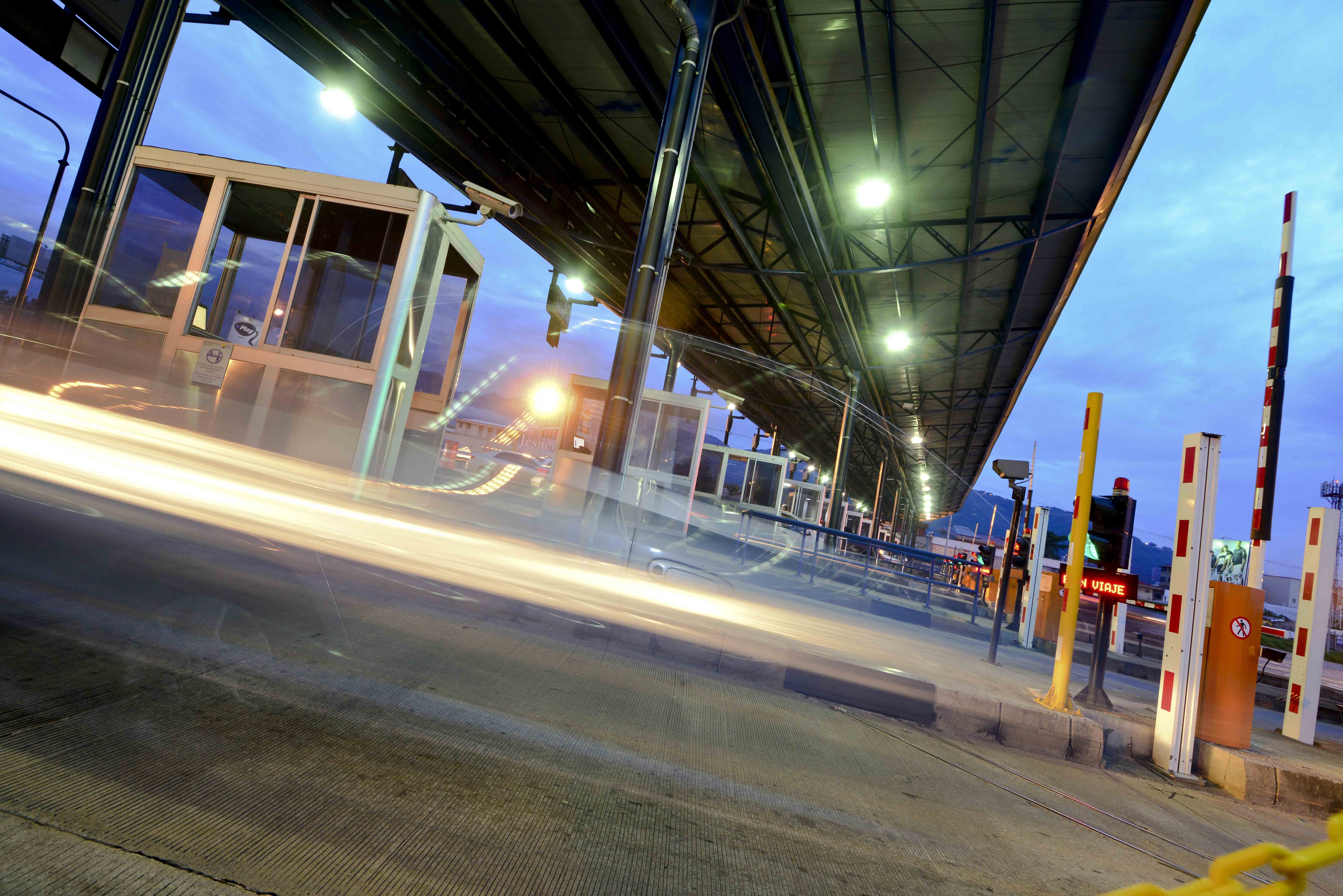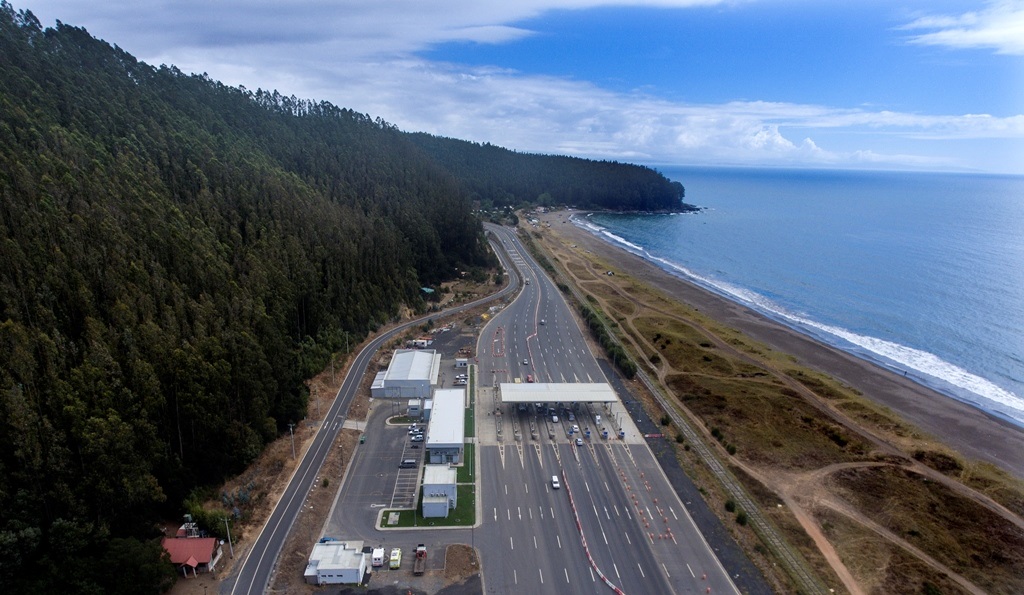
Last year, Chile’s Costa Arauco motorway gained a state-of-the-art advanced traffic monitoring system (ATMS) that significantly improved its network oversight and safety.
And it was all deployed remotely in a few weeks by engineers working from London and Tel Aviv.
The solution is from Valerann, an ITS Software as a Service (SaaS) company specialising in artificial intelligence (AI), big data and data fusion technology. It points the way to a future in which ITS systems are supplied remotely over the cloud, and operate smartly by leveraging a mix of hardware and third-party data feeds. It gives operators new AI-enhanced automated capabilities to swiftly spot, respond to and even anticipate and so minimise or prevent incidents entirely.
In partnership with Openvia Mobility, the Chilean deployment integrated nine cameras for road monitoring, 15 cameras located across three toll areas and eight response operation vehicles, and is one of several Valerann has completed in the region.
Another notable implementation – again, with Openvia - is along Costa Rica’s Ruta 27, which serves as a testbed for innovation in the Caribbean region. The 76.8 km motorway connecting the capital, San Jose, and Caldera, the busiest sea port at the Pacific coast, carries 100,000 vehicles per day.

The road, with 33 mobile and 22 fixed cameras, has a complex terrain with variable width between two to four lanes (each direction) and goes through mountains and valleys. As the road is located in the tropics it is subjected to fog, heat and tropical rains.
Powerful safety tools
Such challenging environments make Latin America a promising and fast-growing market for the company, according to Matthew Cooper, the company’s vice president for market development. (Editor's note: Since this interview, Matthew Cooper has left the company and is replaced by John Fagan, CRO).
“These are very safety-conscious markets with some of the highest accident rates in Latin America," Cooper said. "They take this very seriously. They know their priories and where to invest. They are knowledgeable, but they are handicapped by environment and funding.
This is good for Valerann, he says. “Remote deployment to cloud makes it easier for them to get access to proper ITS systems and third-party data sources. We give them powerful tools they could not leverage before engaging with us.”
Operators in emerging economies with limited budgets now have the potential to leapfrog the functionality of ITS systems from advanced economies.
Valerann’s solution, called Lanternn, offers a number of innovative features. The system offers automated incident detection, helping operators detect where a tricky situation may be coming up and enabling them to get ahead of incidents to mitigate risk. This could include the use of variable message signs, external data sources such as Waze and TomTom, or an alert being sent to nearby patrol cars.
A differentiating feature of Lanternn is its ability to fuse data sources and rapidly analyse them in aggregate, says Cooper: “On other deployments it is incumbent on the operator to look at and analyse each individual data source. Even a modest deployment could have many cameras and lots of alerts from third-party systems and the operator has to then sift through those alerts. We take all those data posts and analyse them in real time to work out what’s going on.”
“It reduces the barriers to entry for road authorities without big budgets to invest and we have a much faster time to value”
The use of AI is an important component here. Valerann’s platform is able to model the position, speed and classification of vehicles in real-time, to intelligently detect and validate events on the road and to predict times and locations with an elevated accident risk.
It uses machine vision to identify both static and moving objects, weather and light conditions and to automatically verify alerts reported from open and floating-car sources. It also uses natural language processing (NLP) to make sense of social media feeds.
The alert system works via thresholds that identify signals which fit the profile of an incident by comparing various data sources and corroborating them. “Once we have that confidence, we can send an alert to the operator,” explains Cooper. “We eliminate blind spots so we have a clear understanding of what’s going on. It’s very valuable.”

This process generates alerts that afford operators a high degree of their veracity while also offering steps to take to resolve the situation. “Those anticipatory capabilities have not been available before even in the most robust ITS systems,” claims Cooper.
Over time operators can also improve the performance of the solution by refining the variables that are most relevant to them based on their own feedback and experiences. This serves to improve the corroborating evidence that gives them ever-greater confidence in their responses to incoming incident data.
Infrastructure-lite
Lanternn’s ability to connect with third-party data sources offering data on speed, volume or occupancy has a further benefit in that it can reduce or even eliminate the need to invest in further infrastructure such as radars and detector loops, obviating the need to procure, install, maintain, and replace such devices.
Cooper points out the value of such a feature to any operator. Given the high cost of legacy ITS infrastructure there, blind spots are almost inevitable even in well-equipped road networks. “You can’t cover every foot of network. We provide road operators with 100% coverage of the network but leveraging both third-party and legacy infrastructure,” Cooper adds.
Operators can also use the solution to analyse the network data over time and in places where there are frequent near-misses or crashes in locations with no detector or camera. Armed with such insights, they can then opt to upgrade blackspot areas with hardware for further safety.
Safety, security and convenience for operational staff is a further benefit. The Costa Arauco deployment in Chile, for example, is on a remote road in a low population area that makes it challenging to attend to infrastructure there. Vehicles travel at high speeds, engineers must cover large distances and equipment is prone to looting. Minimising the need to install hardware here is a clear benefit.
Lowering the barriers to entry
Operating as a SaaS system offers further benefits over legacy systems. There are huge barriers to entry to deploying ITS functionality - devices and detectors and also ITS systems – in emerging economies.
The SaaS model requires no up-front investment and fees are proportional to the compute power required and remote deployment offers further benefits. “Our cloud model and SaaS pricing structure enable these road network operators to have access to a system like ours at a price that does not require significant up-front expense,” says Cooper
Remote deployment (at the customer’s discretion) entails lower costs and faster deployments with less investment in system IT infrastructure (such as servers) and IT management overhead (including dealing with firewalls, for example) compared with established solutions. Testing can also be conducted remotely.
“The number of incidents that get identified has doubled for our customers”
The time savings are significant. Implementation can be completed in as little as two months compared to more than a year to configure, test and hand over, as is the established norm. “It reduces the barriers to entry for road authorities without big budgets to invest and we have a much faster time to value,” says Cooper.
The third-party data sources are also available by subscription, further reducing adoption costs as operators can pay only for what they need, as they need it.
A good example of the practical safety value of such a system is at high-risk, largely cash-based toll booths that are still common in emerging economies. “Leveraging third-party data sources helps them understand what is going on in those parts of network that they could not before and they are not locked out by the high costs they would have to incur,” Cooper suggests.
Metrics that matter
Faster and more responsive traffic management is of enormous value. Valerann claims its system is able to identify incidents 25% faster compared to the period prior to its deployment, a valuable improvement given the importance of responding appropriately within as short a time as possible to prevent the risk of secondary accidents happening. “We know it is driving value and helping them save lives,” Cooper says. “The number of incidents that get identified has doubled for our customers. Their level of awareness to what has been happening has increased and they are now able to increase safety across the entire road network as opposed to particular spots where they have legacy ITS devices.”

But the solution is also being deployed by operators in advanced economies who are also benefiting from the gaps it can fill even in well-equipped networks. This is very much the next generation of intelligent systems, which offers what other advanced systems have struggled to achieve.
Cooper cites the example of the Australian state of Victoria, which invested significantly in automated detection but struggled to gain reliable outputs from the system.
“Even the most robust deployments will have blind spots,” says Cooper. “We enable them to know where to put the next bits of infrastructure and for those who have not invested as much, a platform like ours enables them to get up to speed more quickly. An agency or an operator which has not deployed cameras can use third-party data sources to give them the coverage to understand what is happening. We show them where they can make their first investment. Whether we are talking to someone looking to deploy their next camera or their next 100, there is still value in what we offer.”











